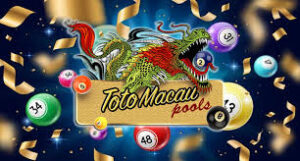Massage therapy, often seen as a luxury or indulgence, is a profound practice that intertwines art and science to promote healing, relaxation, and overall wellness. Its origins stretch back thousands of years, reflecting a rich tapestry of cultural traditions and scientific advancements. Today, 다낭 마사지 핫한 곳 순위별로 알려드립니다 therapy stands as a testament to the powerful interplay between human touch and health.
Historical Roots
The history of massage is as diverse as the techniques it encompasses. Ancient civilizations such as the Egyptians, Greeks, and Chinese employed massage for its therapeutic benefits. In ancient China, texts dating back to 2700 BCE document the use of massage for health and longevity. Greek physician Hippocrates famously advocated for its benefits, referring to it as a form of medicine in his writings.
In the East, Ayurveda, the traditional system of medicine from India, has long integrated massage into its holistic approach. The practice of Abhyanga, a type of oil massage, aims to balance the body’s energies and promote well-being. Meanwhile, traditional Chinese medicine has utilized techniques like Tui Na to enhance the flow of Qi, or vital energy, throughout the body.
The Modern Science of Massage
Modern massage therapy is rooted in both tradition and contemporary science. Research has shown that massage can significantly impact the body’s physiological and psychological states. It reduces stress hormones like cortisol, stimulates the release of endorphins, and enhances overall circulation. These effects collectively contribute to improved mood, reduced pain, and a stronger immune system.
One of the most well-documented benefits of massage is its role in pain management. Clinical studies have demonstrated that massage can alleviate chronic pain conditions such as lower back pain, arthritis, and fibromyalgia. Techniques like deep tissue massage work on deeper layers of muscle and connective tissue, providing relief from tension and stiffness.
Massage therapy also plays a critical role in rehabilitation and recovery. Athletes frequently use sports massage to prevent injuries, enhance performance, and expedite recovery. Techniques such as myofascial release and trigger point therapy address specific muscle groups and fascia, helping to restore function and reduce discomfort.
The Art of Touch
Massage is as much an art as it is a science. The therapist’s touch, intuition, and skill play a crucial role in tailoring the experience to the individual’s needs. Various styles of massage, from Swedish and Shiatsu to hot stone and aromatherapy, offer different techniques and benefits. Each method employs a unique approach to manipulating muscles and tissues, reflecting the diverse ways in which touch can influence the body.
Swedish massage, for instance, focuses on long, flowing strokes and gentle kneading to promote relaxation and improve circulation. Shiatsu, a form of Japanese massage, applies pressure to specific points along the body’s meridians, aiming to restore balance and energy flow. Hot stone massage utilizes heated stones to ease muscle tension and enhance relaxation.
Beyond the Physical
The benefits of massage extend beyond the physical realm. The experience of being touched and cared for can have profound emotional and psychological effects. Many individuals find that massage provides a sanctuary from daily stressors, offering a moment of peace and tranquility.
Massage therapy can also be a powerful tool for improving mental health. It has been found to reduce symptoms of anxiety and depression, partly due to its ability to lower stress hormone levels and enhance overall mood. The sense of connection and trust established between therapist and client further contributes to the therapeutic experience.
The Future of Massage Therapy
As our understanding of the human body and mind continues to evolve, so too does the field of massage therapy. Advances in technology, such as the use of biofeedback and virtual reality, are beginning to intersect with traditional practices, offering new possibilities for enhancing the therapeutic experience.
In addition, the integration of massage therapy into conventional healthcare settings is gaining traction. Hospitals and clinics are increasingly recognizing the benefits of complementary therapies, including massage, as part of a holistic approach to patient care.
Conclusion
Massage therapy is a remarkable fusion of art and science, with roots deeply embedded in ancient traditions and a strong foundation in modern research. Whether used for relaxation, pain relief, or emotional well-being, the practice of massage offers a myriad of benefits that transcend physical touch. As we continue to explore its potential and integrate it into various aspects of healthcare, massage therapy remains a powerful testament to the healing power of human touch.





